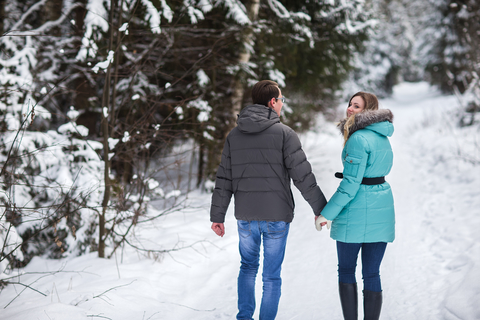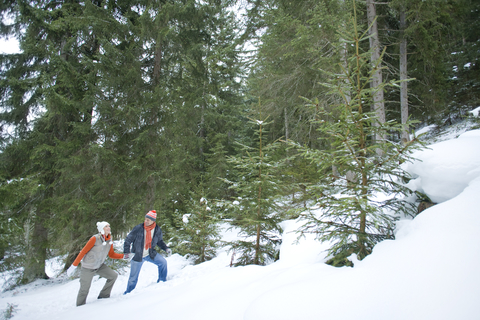When visiting Hilltop House B&B, the area abounds with some terrific places to hike! But hiking in the winter months adds an extra level of caution to both planning and going on your hike. Prepare for the unexpected!
To make your hike safer:
Never hike alone, use the buddy system.
Make sure someone knows where you are going and when your estimated return time is. Day hikers should be prepared to spend the night in the woods if necessary, a hiker may get injured sliding on ice, or an unexpected snow storm may come up. Be sure to tell the B&B where you are heading if going out for a winter’s hike and an estimated time when you will be back.
Some essentials to bring with you:
• A trail map
• A compass
• A first aid kit
• A flashlight or headlamp
• A multi-tool like a Leatherman with a knife
• Waterproof matches
• A space blanket or two (they take up very little room)
• Hand Warming Packets
• Waterproof boots, plastic is recommended as Leather freezes in cold weather.
• Vapor barrier socks
• Food and water, your body burns more energy hiking in winter then it does during the summer
• Dress in layers
• Avoid cotton
• Sun screen and chap stick
• Bring backup chargers for your cellphone (but be cognizant of the fact you may not have cell service) most smart phone have flashlights and there are some terrific outdoor apps that can be downloaded for use such as digital compasses and colored light flashing apps that may help a rescuer find you in the snow.
Additional Tips:
Carry your canteen upside down, Water freezes from the top down, if you carry the canteen upside down, it is actually the bottom where the water will freeze, not the mouth of the canteen.
White birch bark will burn even when wet and makes some of the best emergency tinder. A small container of Vaseline with several cotton balls serves double duty, cotton balls covered with the oil make excellent fire starters and the Vaseline is also very useful for protecting against windburn and skin chapping.
Some great additional winter hiking tips can be found at:
http://matadornetwork.com/notebook/10-tips-for-safe-and-comfortable-winter-hiking/
http://www.active.com/outdoors/articles/Tips-for-Winter-Hiking
http://www.rei.com/learn/expert-advice/winter-camping.html
http://bwca.cc/activities/hiking/articles/winterbackpacking.html
Snow Walker Bushcraft has some great winter survival videos at:
http://www.youtube.com/user/Snowalker13?feature=watch
Some additional tips if you are stuck outside on your hike unexpectedly:
• Build a fire for heat and to attract attention.
• If you need to rest, try to gather tree branches and boughs to sit or lie on, so your body doesn’t make direct contact with the snow.
• Place rocks around the fire to absorb and reflect heat.
• Prepare a lean-to, wind-break, igloo or snow cave for protection from the cold.
• If you don’t have time to prepare anything elaborate, try at least to make a shield from the wind.
• Do not eat snow. It will lower your body temperature. Melt it first when possible.
• Make yourself visible to rescuers.
• Exercise from time to time by vigorously moving arms, legs, fingers and toes to keep the blood circulating and to keep warm.
A really terrific list (and instructions) on building wilderness survival shelters:
http://www.wilderness-survival.net/chp5.php Many of these can be made using space blankets, ponchos and tarps.
Some additional references:
Diagnosing And Treating Frostbite In the Field
http://www.outdoorlife.com/blogs/survivalist/2013/01/diagnosing-and-treating-frostbite-field
Survival Skills: How To Make Ground-To-Air Signals in Snow
http://www.outdoorlife.com/blogs/survivalist/2013/01/survival-skills-how-make-ground-air-signals-snow



